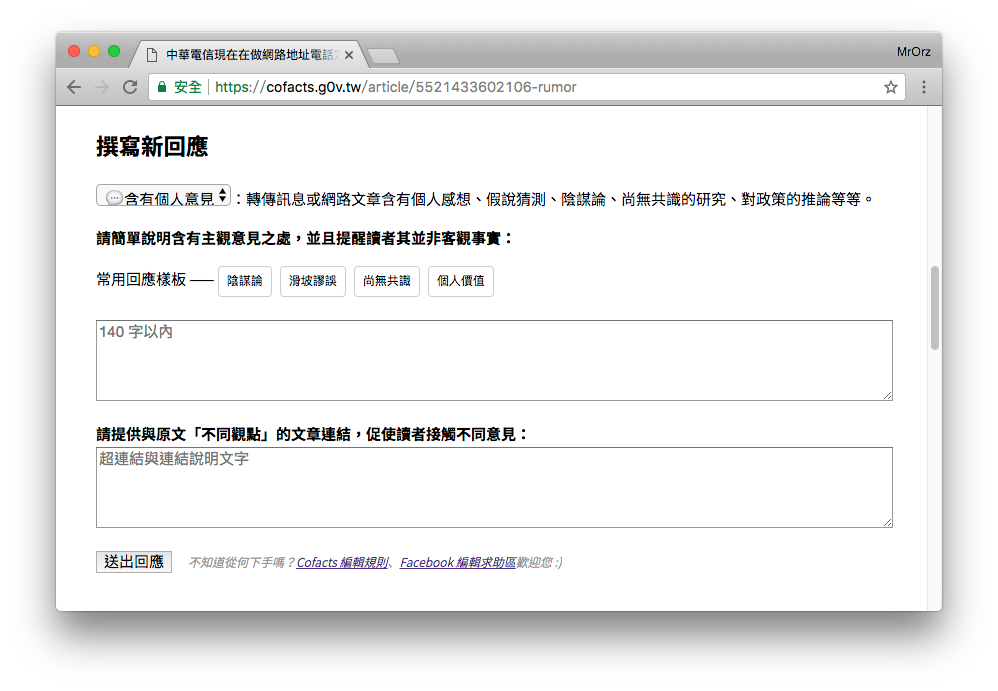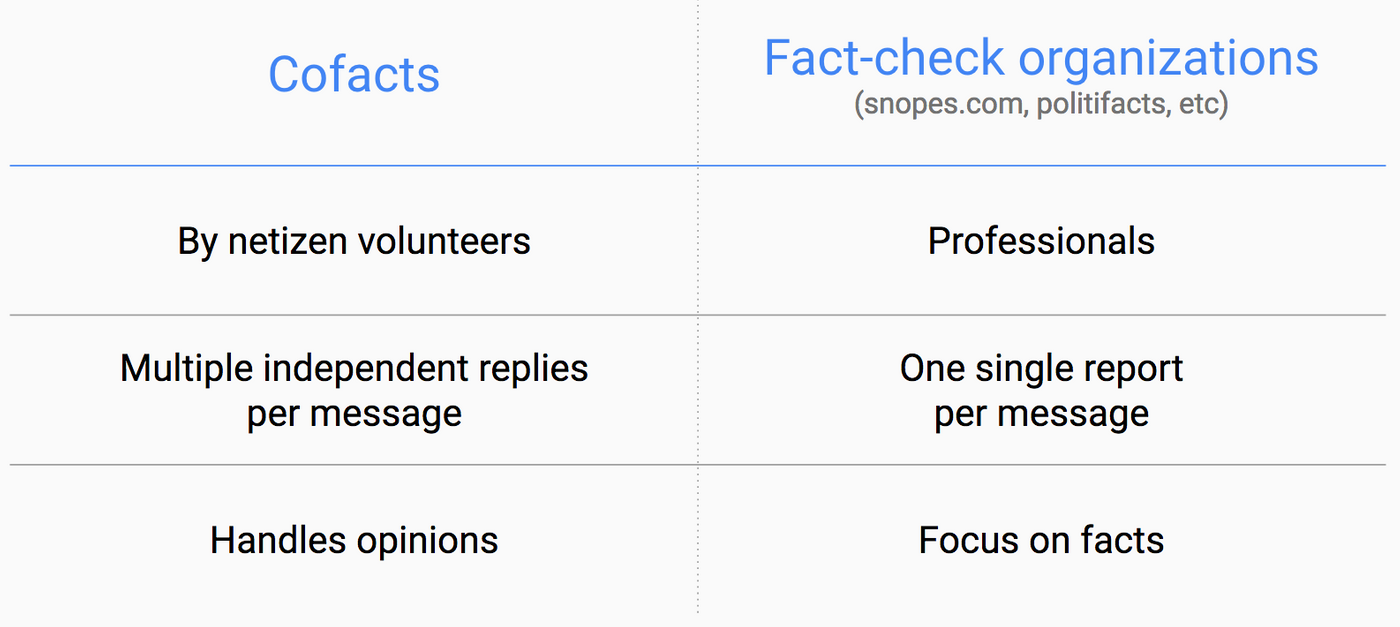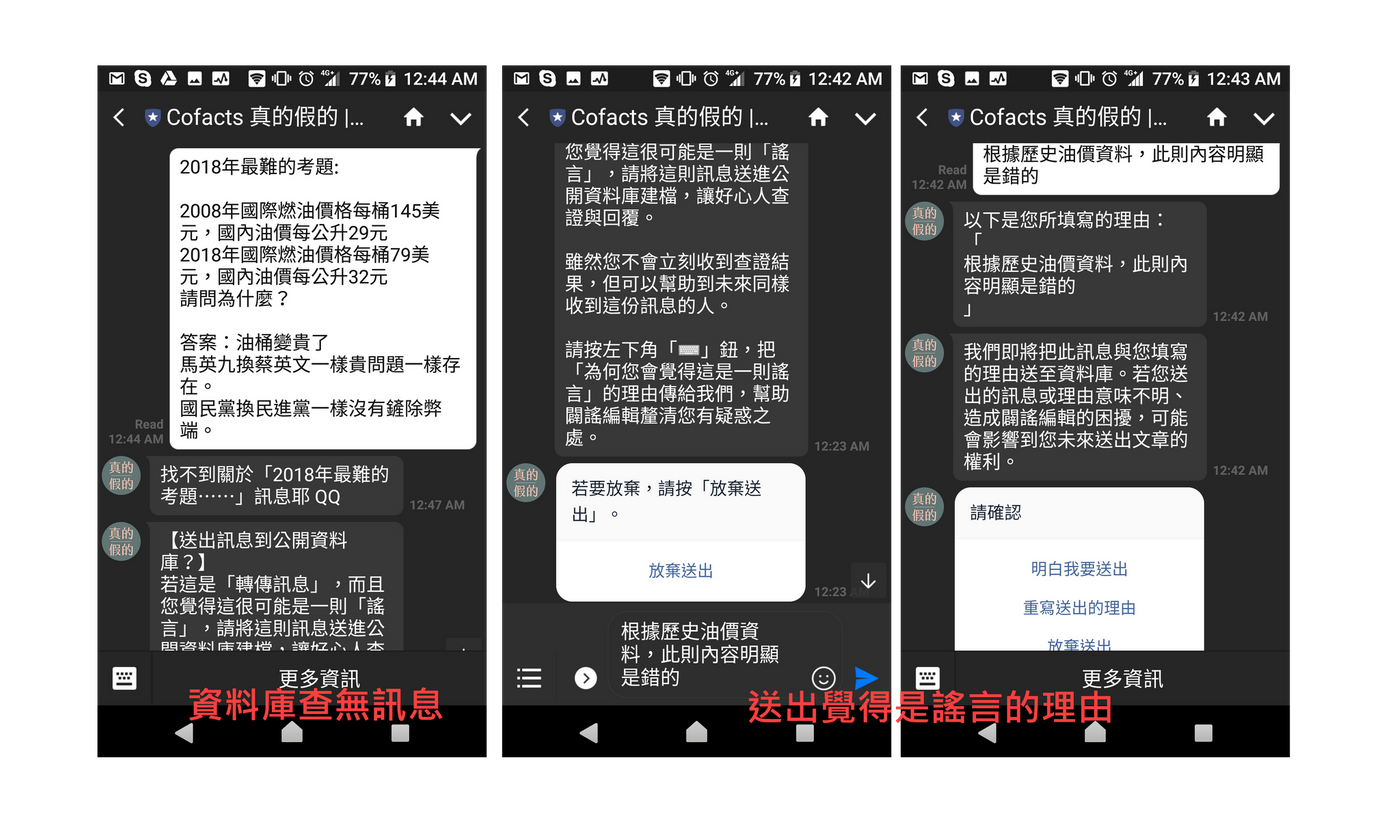
MrOrz / Johnson 在軟體公司上班。 下班後,是 g0v Cofacts 專案的發起人。
How 40,000 people added "Cofacts" as friends
In the era of e-mail, computer instant messaging, and smart phone communications, spreading rumors has always been a problem that many people worry about, but are not so troubled that they want to actively solve it.
At that time, the chain of rumors that everyone would forward to each other in e-mails was unbelievable from the perspective of young people who have now experienced discussions on search engines, blogs, and forums. And now, what is happening in LINE's chat window is very similar to what happened in the email era in the past, except that the penetration rate of the modern Internet is higher and it reaches a lot of people who have not been through the above period. Therefore, the skills of "checking online information and contacting different viewpoints" that young people have learned from savage growth in the chaos of the Internet also need to be redesigned so that more people can more easily grasp the ability to read and identify content.
In the beginning, everyone checked the messages they received in their own chat windows, but the results of the hard checking were usually only spread in a small area in the group; it took time to google and sort out the information, but in the end it was only in the group It's a pity that people can see it.
Therefore, our first attempt was to simplify "go to google and sort out information by yourself", so we came up with the first proposal in October 2016. Doing and discovering, refuting rumors is not something that can be easily done by feeding Google the original text of the message with keywords such as "rumor refuting rumors", so it has developed into the current form of mass collaboration.

The Design Ideas Behind
Cofacts currently has several design choices worth mentioning.
- Anyone can be an editor
- A message can have multiple responses
- Handling "personal opinions"
- Ask "Why do you think this is a rumor?"
Design choice 1: Anyone can be an editor
One of the reasons we believe there is no significant difference in accuracy between Wikipedia and Britannica is that Wikipedia is inclusive.
We choose not to verify the identity of the editor. On the other hand, it is also a trade-off under the lack of development resources. We cannot prove that the editors who have been reviewed can fairly verify the responses, and we have no energy to verify and evaluate the editors. It’s more important to design other mechanisms that allow the community to thrive first—for example, a mechanism that encourages editors to rewrite responses that users find unhelpful, a mechanism that allows editors to develop a habit of debunking rumors, and so on.
Want to watch editors? Four steps to get started!
Design choice 2: Multiple responses per message
A companion measure to making anyone an editor is to allow editors to write multiple responses to messages.

Compared with Wikipedia, which finally presents a complete article and puts the discussion process on the extension page, we design it closer to online Q&A platforms such as Stackoverflow and Quora, and expose all the discussion process so that the public can upvote and downvote the content.
In response to such a design, people often ask us, "Ah, with so many responses, which one should I believe?"
Unfortunately, the vast majority of messages are currently only one response 😅.
Furthermore, if there are really many conflicting responses, we encourage users to decide for themselves who to trust. They can choose and decide which response to adopt by looking at whether the reference selected in this response can support the editor's narrative, and whether the response has responded to their doubts, etc. In addition, if a message has many responses, it may be that the message has many paragraphs, and different responses may be responses to different paragraphs, so not all responses are necessarily antagonistic to each other.
Finally, if users feel that the existing responses are not good enough, we also encourage users to write an article and share their thoughts and verification results with everyone. This is one of the ways to keep the response as high as possible in the current situation where "anyone can be an editor".


Design choice 3: Handling personal opinions
Traditional fact-checkers like Snopes don't touch "personal opinions". But Cofacts allowed editors to select the category of "contains personal opinion" when responding in August last year, and responded to the reposted message with another subjective opinion.

For example, the 2017 White Paper dispute was a highly ideological issue with few objective facts to verify. At that time, when the editor of Cofacts saw the message against the reduction of the proportion of classical Chinese , he refuted it with the opinion of the supporter, and vice versa . You can also go directly to the response list of Cofacts and select "Contains Personal Opinions" to see which messages are currently marked as "Contains Personal Opinions" on the platform.
Some people may ask, personal opinions that have nothing to do with objective facts belong to personal freedom of speech. How can this be the category of fact-check? In fact, it's all about making editors happy and users happy .
When a LINE user forwards a personal opinion article, it usually means that the user does not agree with the message to some extent. And when Cofacts editors read personal opinions that they want to refute, but because they are subjective opinions, they cannot be marked as "contains false information", which also makes editors a little frustrated. The category of "Containing personal opinions" allows editors to send "subjective opinions" of "different opinions" into the database as References, and also allows LINE users to read the different opinions they want to refer to. Said to be a win-win situation.
The traditional fact-checker does not have this interactive mode of "editing" and "user", and naturally it does not want to touch the hot potato of "personal opinion".

Design choice 4: Ask a chatbot user a question
Sometimes Cofacts receives messages that are not rumors, such as weather forecasts issued by the Central Weather Bureau, mainstream media reports, etc. The content of these unclear points of contention is unplayable noise for the platform. Editors want to know, why on earth would LINE users want to pass messages in? Where is he most confused about a message?
A few weeks ago, chatbots started asking users to enter "whatever they want to know" when they sent a message to the database. On the one hand, we want to use this mechanism to let less information that has nothing to do with rumor verification come in, and on the other hand, let editors no longer need to guess the user's intentions out of thin air. Finally, we also hope that this feature encourages LINE users to learn how to use words to describe their doubts after reading an online message, which we believe is an important step in media literacy.


What is the current situation?
This table presents the status of chatbot users querying messages. Every time a user clicks on a message in the database on the chatbot, the "Search count" will be +1.

It can be seen that there were more than 10,000 search counts throughout July 2018, with about 4,700 users.
The most inquiries were on the Taoyaoya fake gift certificate message, which was inquired 302 times this month, and the message was replied on the same day.
The most valuable part of "auto-reply" is that it allows editors to write well-written responses and distribute them to every user who comes to ask at an ultra-low zero marginal cost. If users can forward Cofacts' replies back to where they originally received the message, it will allow more people to see the replies.
The most popular message in the past few days is "bring your ID card when you go abroad" . According to the statistical chart , the number of inquiries peaked on 7/30 (125). The editors who responded quickly have already filled in their responses on 7/29, and hundreds of LINE users representing 7/30 can read the editor's responses.
After reading these highly exposed responses, do you want to roll up your sleeves and write a response for the current chatbot's 40,000 LINE users?
What difficulties do you encounter?

Like many projects that are open to collaboration, Cofacts suffers from a lack of editors participating in collaboration. An average of 35 "new" messages enter Cofacts' reposting message database every day, but only 3.5 editors respond to messages every day, which means that one person has to do 10 messages a day to keep up with the speed of incoming messages.
Insufficient editing, which affects several things:
- Editing pressure: Existing editing pressure is huge.
- Response quality: The editorial group lacks diverse backgrounds and cannot respond accurately to messages in different fields.
- Speed: By the time the response is written, the disinformation may already have had a negative impact .
We are still thinking about how to increase the number of editors with limited team operation and program development resources. So I would like to hear your thoughts on Cofacts:
- What are your thoughts on "mass collaboration to refute rumors"?
- What do you think about "returning personal opinions with personal opinions"?
- Would you like to be an editor and use the keyboard to do meritorious deeds ? Why?
Like my work?
Don't forget to support or like, so I know you are with me..
Comment…